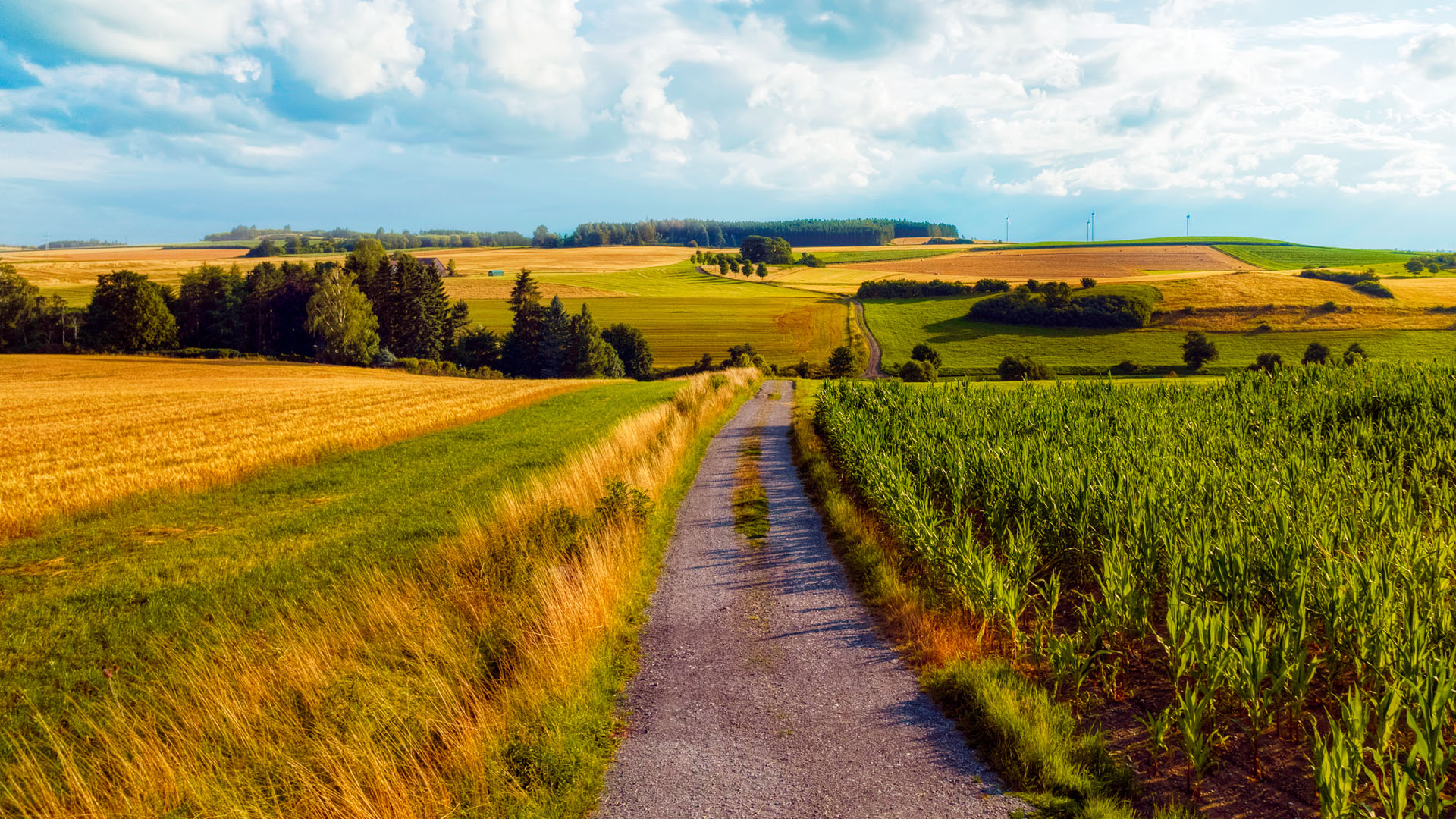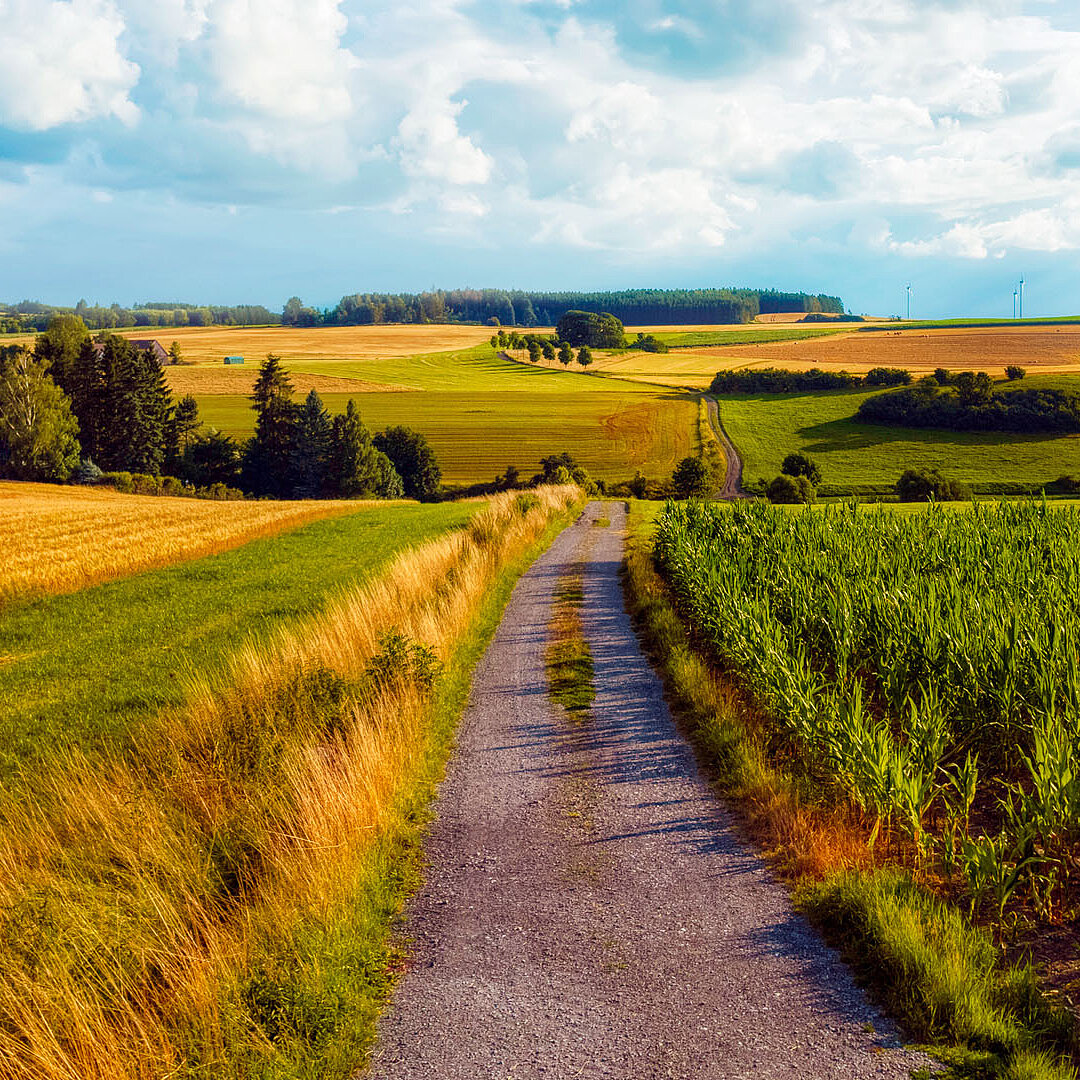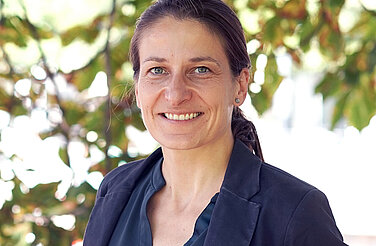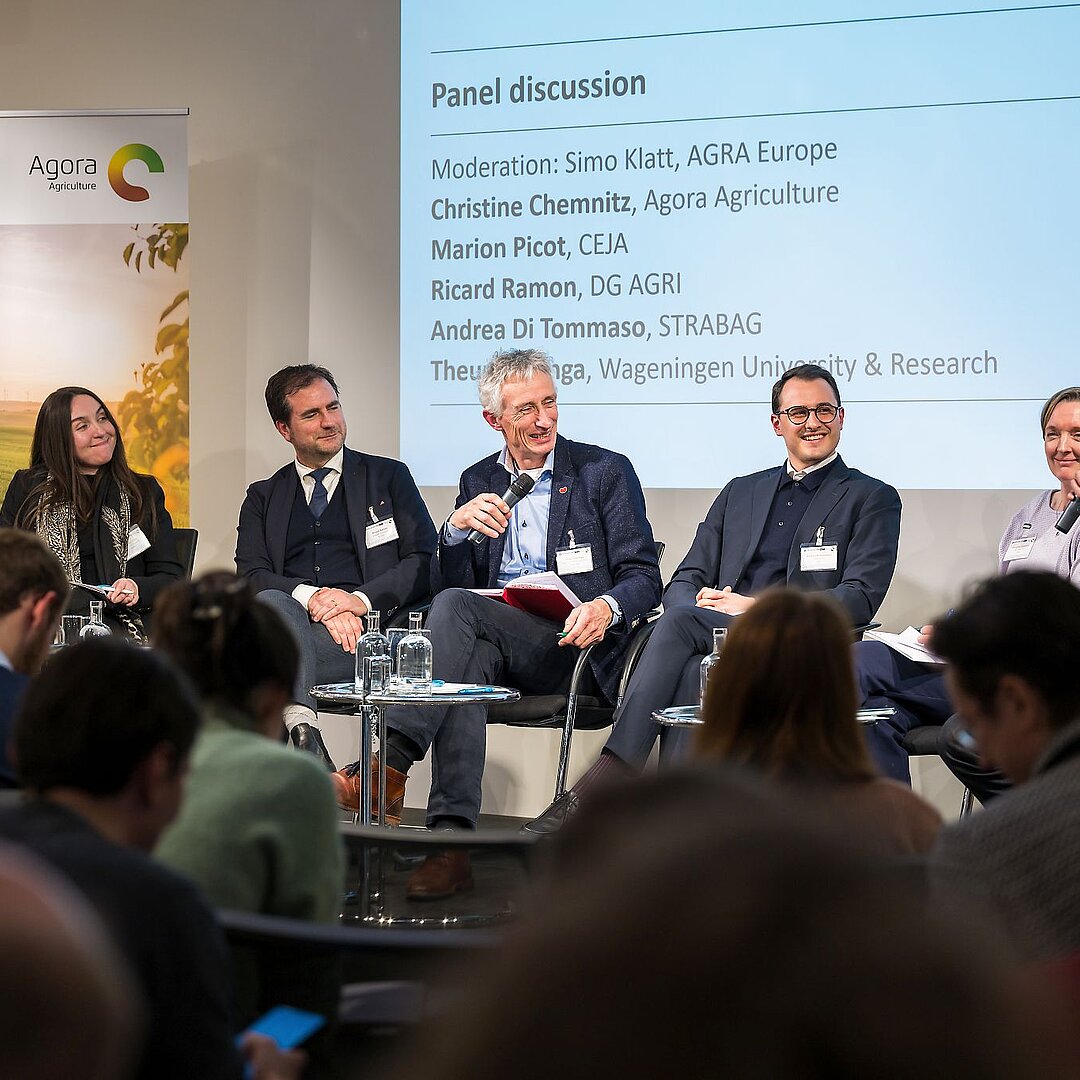This content is also available in: German
Sustainable and productive: The future of land use in a climate neutral EU
Agriculture and forestry can significantly increase their contribution to climate neutrality, while helping to achieve other sustainability goals such as biodiversity protection and better health. A new study by Agora Agriculture identifies the future potentials of these sectors and what policymakers can do to realise them.

Berlin, 10 September 2024. The European Union can reduce greenhouse gas emissions from agriculture and agricultural peatlands by 60 percent by the middle of the century, a new report by Agora Agriculture finds. This indicates a significant shift as emissions from the sector have barely decreased since 2005. Such emission cuts are possible, while producing sufficient food and biomass, improving biodiversity and strengthening carbon removals in the agricultural landscape and in forests. The study also concludes that the EU can reduce imports and increase exports of agricultural products, thereby making a greater contribution to global food security.
At the start of the new EU legislative period and in the run-up to a strategic vision for agriculture and food by European Commission President Ursula von der Leyen, the study presents the first integrated future scenario outlining the potential contribution of agriculture and forestry to the EU's sustainability and climate objectives. The scenario is based largely on a quantitative analysis using the sectoral equilibrium model CAPRI.
"Agriculture and forestry can significantly increase their contribution to a sustainable and resilient EU through steeper emission cuts and enhanced biodiversity. To realise this potential, this EU legislative period should create a political framework that promotes efficient land use and sustainable consumption and rewards producers for their additional contributions to sustainability," says Christine Chemnitz, Co-Director of Agora Agriculture.
Using land efficiently
A core element of the scenario is efficient land use, which combines different types of land use in a way that strengthens synergies and reduces trade-offs between societal objectives. This allows for high yields of food and feed as well as other biomass, while also providing public goods, such as the storage of carbon in plants and soil and the protection of biodiversity.
Integrating trees, bushes or hedges in the agricultural landscape, for example through agroforestry systems – which combine forestry and agriculture on agricultural land – has several advantages: In addition to strengthening biodiversity, they contribute to climate action by storing carbon in wood and roots and by producing biomass that can replace fossil raw materials throughout the economy. Growing trees on around eight percent of EU agricultural land, as assumed in the scenario, would allow storing up to 660 million tonnes of CO₂. Using this woody biomass as a replacement for fossil raw materials can furthermore avoid around 130 million tonnes of CO₂ emissions annually.
Drained peatlands which cover two percent of EU agricultural land, offer a particularly high emission reduction potential as they are responsible for around 20 percent of agricultural greenhouse gas emissions. The study estimates that rewetting about 80 percent of those peatlands would help reduce annual emissions by the equivalent of around 70 million tonnes of CO₂. At the same time, a large proportion of the rewetted land can be used, for example, to produce biomass to meet the demand for climate-friendly insulation and packaging materials.
"Rewetting makes economic sense, but at the same time it poses major challenges for the farms currently operating on drained peatlands. That is why, after centuries of societally supported drainage, new business models for wet farming must now be developed," says Harald Grethe, Co-Director of Agora Agriculture. “To provide planning security, we need rewetting premiums for farmers and investments in the establishment of new value chains.”
Finally, the scenario shows that increasing biodiversity in the agricultural landscape requires less arable land than previously assumed. On average across the EU, setting aside only around five percent of arable land would suffice to achieve a 20 percent share of semi-natural habitats in agricultural landscapes, which is required to protect biodiversity. The eight percent woodland cover on agricultural land assumed in the scenario, the rewetting of agricultural peatlands and a less intensive use of permanent grassland are important prerequisites for this.
Sustainable consumption
The second core element of the scenario is sustainable demand for food, feed and other biomass. Fair food environments support healthier, more plant-rich diets and the reduction of food waste. With the consumption of animal products, such as milk and meat, halved by the middle of this century, feed imports as well as the land area required for feed production within the EU are also halved in the scenario. This creates opportunities: Land can be used to produce biomass for the growing bioeconomy. In addition, the provision of public goods such as the protection of biodiversity can be enhanced.
"Our vision for the future of agriculture offers a range of new income opportunities. These arise from the bioeconomy, the production of renewable energies and the growing demand for public goods, for example carbon storage. Since the lower consumption of meat and dairy products represents a challenge for regions with a lot of livestock production, this change must be supported politically," says Harald Grethe.
A policy framework incentivising sustainability and climate action
For agriculture and forestry to realise their sustainability potential, an enabling policy framework is needed that creates economic opportunities for farmers and forest owners. At the core of such a framework are market-based instruments, such as pricing greenhouse gas emissions, as well as public payments for the provision of public goods.
"Just like improved animal welfare, climate action and biodiversity protection have a social value that is usually not rewarded by the market. It is therefore important to use public funds from the common agricultural policy and other financial resources in such a way that sustainability becomes an income opportunity for agriculture and forestry," says Christine Chemnitz.
The 2024–2029 EU legislative period offers the opportunity to establish an enabling policy framework for sustainable agriculture and forestry. Important elements of such a framework include:
- an ambitious climate policy for agriculture and forestry, which sets targets for both reducing emissions from agriculture and agricultural peatlands and storing carbon in forests and the agricultural landscape,
- the use of the EU’s common agricultural policy funds to reward the provision of public goods,
- an EU legislative framework to promote sustainable food systems, and
- an action plan for the efficient use of biomass in the bioeconomy.
Moreover, the EU and its member states should focus more on rural areas to ensure they benefit from the transition to a climate neutral economy. A “European Rural Deal" can contribute to this by enabling sustainable rural business models, promoting the development of modern infrastructures and facilitating rural communities’ access to education, healthcare and culture.
The 212-page study “Agriculture, forestry and food in a climate-neutral EU - The land use sectors as part of a sustainable food system and bioeconomy” is available in English for free download at www.agora-agriculture.org.



